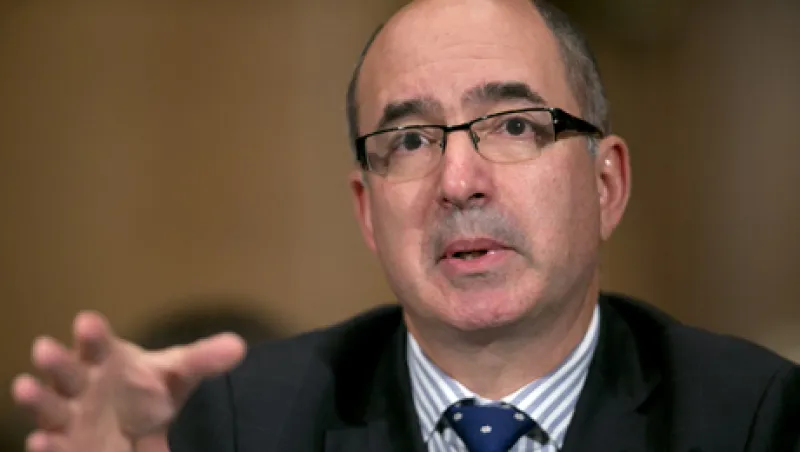While panelists on today’s SEC technology roundtable argued about whether high frequency trading adds or takes liquidity, Larry Tabb, CEO of TABB Group, is demanding more tangible measures by calling for a reduction in the number of computerized trading systems.
The panel was called to help the SEC address problems with high frequency trading, and Jamil Nazarali, head of execution services at Citadel Securities, a subsidiary of the Chicago financial firm headed by Ken Griffin, surprised the audience with his denial that high frequency traders, who use sophisticated computer systems to execute stock trades in milliseconds, are primarily engaged in exploiting small price differences in equities. He complained that that most press coverage of high frequency trading treats the practice as predatory or abusive.
“Most of our focus is on trading strategies aimed at adding liquidity to the marketplace, not the pursuit of small price advantages, as the headlines suggest,” Nazarali said.
That drew a rejoinder from fellow panelist Dave Lauer, a consultant with Better Markets, a Washington, D.C.-based not-for-profit, and a former high-speed trader at Citadel. Lauer reminded the panel that the SEC had found in its study of the so-called Flash Crash of May 6, 2010, most traders had “taken” liquidity rather than added it during that day’s market meltdown. That afternoon the Dow Jones Industrial Average lost 600 points in five minutes only to recover most of them two minutes later.
Lauer’s view was seconded by Tabb who told Institutional Investor in an interview in anticipation of the roundtable that high frequency trading never adds “true liquidity,” since the firms involved have no obligation to support prices when other market participants are selling, and therefore typically don’t.
What HFT does provide, said Tabb, was price transparency, even if prices move one way or another in response to traders’ efforts to arbitrage small differences in those of stocks listed on different exchanges.
The problem, in Tabb’s view, was that such movements had led to such narrow spreads between bid-ask prices that there was little incentive for banks and other market makers, which do have an obligation to support prices on behalf of their clients, to take part in stock trading. Many have abandoned market making of late, in part because of the dominance of HFT.
Tabb contends that the SEC should seek to reverse that by narrowing the universe of computerized trading systems. The commission could do that, he explained, by licensing fewer new ones or withdrawing the licenses of marginal players. Tabb noted that there currently are approximately 90 such systems, known as alternative trading systems, of which he said almost a third are “immaterial.”
Tabb argued that such a limit would have fewer unintended consequences on trading than heavier-handed regulatory attempts, including transaction taxes and circuit breakers, to prevent further price swings like that of the Flash Crash.
Ironically, the SEC cracked down on alleged collusion among members of the National Association of Securities Dealers in the 1990s to keep bid-ask spreads wide.
“Guys were being taken away in handcuffs,” Tabb recalled. “But maybe they were doing the right thing.”






